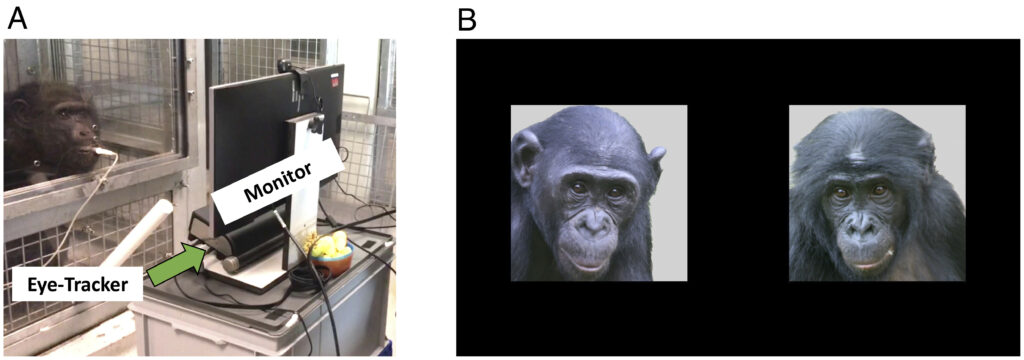Despite not seeing each other for as long as 26 years, great apes remember friends and acquaintances from the past. This is revealed in a recently published international study.
In the study, chimpanzees and bonobos (pygmy chimpanzees) from different zoos were given the opportunity to look at pictures of conspecifics. It turned out that they looked longer at pictures of individuals they once knew, than at strangers.
The research indicates that great apes can remember friends and acquaintances from as far back as 26 years. Previously, this was only found in dolphins who could remember acquaintances from 20 years ago.
Wanted to research remembrance
The fact that great apes are intelligent and possess a well-developed social ability is well known, but what role memories play in their social context has previously been unknown.
Researchers in psychology from an international team suspected that great apes they hadn’t seen for years remembered them when they saw them again. It made them think about how far back the animals’ social memories actually stretched.
Followed the apes eye movements
To investigate this, chimpanzees and bonobos at zoos in Scotland, Japan and Belgium were given the opportunity to participate in an experiment. A monitor was placed outside the enclosure as well as a bottle with an attached nozzle, from which the apes could drink fruit juice. That way, they sat relatively still while looking at images on the screen and the researchers could follow their eye movements. A total of 26 apes participated.

The selection of pictures of friends and acquaintances consisted both of individuals who had died or who had moved but previously been in the same group as the viewer.
Looked longer at familiar faces
The research showed that the apes looked on average 0.25 seconds longer at pictures of individuals they had met before. The researchers interpreted this as recognition.
“Had they not recognized them in any way, we would have expected them to look in the same way as at unknown individuals,” says senior author Christopher Krupenye from the American Johns Hopkins University.
Positive attachment mattered
The study also showed that the apes looked more at pictures of individuals with whom they had had a positive bond, as opposed to those with whom they might have had a conflict.
“So they show a greater interest in what we would call their friends,” says the study’s lead author, Laura Simone Lewis, postdoctoral fellow at UC Berkeley in the US.
A study like this is not only touching, the researchers say, but also fulfills another purpose.
“Apes are extremely endangered and if we don’t work proactively to save them, we risk losing these species in our lifetime,” says Christopher Krupenye.
No compulsion in the study
This fact also affected how the study was conducted. No ape was forced to participate, it was completely voluntary whether they wanted to look at the pictures or not.
Laura Simone Lewis is looking forward to everything we will be able to learn about apes.
“Perhaps in the future we will begin to understand more about how they remember, and whether or not they miss individuals who are no longer around them,” she says.
Source: Business Insider
The research article can be found on PNAS